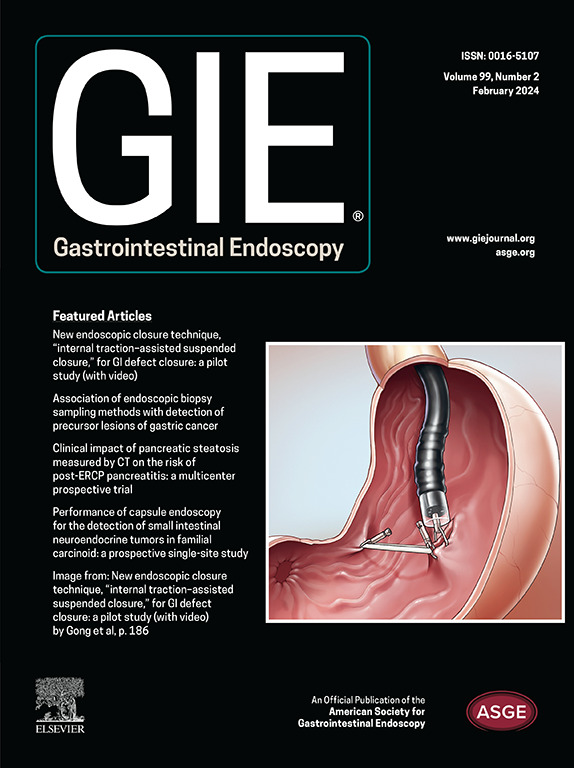灌洗管道中的伯克霍尔德氏菌污染导致柔性胃肠道内窥镜消毒失败的调查。
IF 6.7
1区 医学
Q1 GASTROENTEROLOGY & HEPATOLOGY
引用次数: 0
摘要
背景和目的本研究旨在找出多种柔性消化道内窥镜消毒失败的原因,并改进清洗和消毒程序:方法:在2021年5月至7月期间,收集消化内镜中心的内镜设备、周围物体、清洗水、自动消毒器和综合内镜清洗工作站的样本,并对微生物污染和DNA/基因含量进行分析:样本分析表明,清洗工作站的水槽灌溉管道受到伯克霍尔德氏菌污染。在采取有效的消毒措施后,消毒后的内窥镜中的伯克霍尔德氏菌检出率从 13.23% 降至 0%(P=0.041)。通过同源性搜索和基因测序证实了头孢杆菌的存在:结论:内窥镜消毒失败的主要原因是水槽灌洗管被头孢杆菌污染。这些发现强调了彻底清洁综合内窥镜清洗工作站灌洗管的必要性,而这在日常维护中通常被忽视。本文章由计算机程序翻译,如有差异,请以英文原文为准。
Investigation of failure of flexible GI endoscope disinfection because of Burkholderia cepacia contamination in irrigation tubing
Background and Aims
This study aims to identify the cause of disinfection failure for multiple flexible GI endoscopes and to enhance the cleaning and disinfection procedures.
Methods
Samples from the endoscopy devices, surrounding objects, cleaning water, automatic sterilizer, and integrated endoscopic washing workstation in a Digestive Endoscopy Center were collected and analyzed for microbial contamination and DNA/gene contents between May and July 2021.
Results
The sample analysis revealed that the sink irrigation tubing of the washing workstation was contaminated with Burkholderia cepacia. After effective disinfection measures, the B cepacia detection in the disinfected endoscope dropped from 13.23% to 0% (P = .041). The presence of B cepacia was confirmed through homology search and gene sequencing.
Conclusions
The primary reason for endoscope disinfection failure is the contamination of the sink irrigation tubing by the B cepacia bacteria. These findings emphasize the need for thorough cleaning of irrigation tubing in integrated endoscopic washing workstations, which is generally neglected in routine maintenance.
求助全文
通过发布文献求助,成功后即可免费获取论文全文。
去求助
来源期刊

Gastrointestinal endoscopy
医学-胃肠肝病学
CiteScore
10.30
自引率
7.80%
发文量
1441
审稿时长
38 days
期刊介绍:
Gastrointestinal Endoscopy is a journal publishing original, peer-reviewed articles on endoscopic procedures for studying, diagnosing, and treating digestive diseases. It covers outcomes research, prospective studies, and controlled trials of new endoscopic instruments and treatment methods. The online features include full-text articles, video and audio clips, and MEDLINE links. The journal serves as an international forum for the latest developments in the specialty, offering challenging reports from authorities worldwide. It also publishes abstracts of significant articles from other clinical publications, accompanied by expert commentaries.
 求助内容:
求助内容: 应助结果提醒方式:
应助结果提醒方式:


